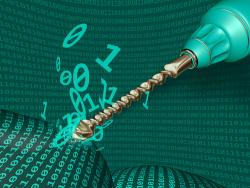What’s the Big Deal About Big Data?

But not all of our civilization’s vast reservoir of personal data is being gathered by the National Security Agency or Amazon.com.
Mouth-Watering Maps Continue to Mine Big Data
Increasing numbers of people are gathering amassing vast amounts of information about themselves. Case in point: Economist data editor Ken Cukier, co-author of the 2013 book “Big Data: A Revolution That Will Transform How We Live, Work, and Think,” who wears a small device on his wrist that measures health-related data, ranging from how many steps he takes each day to how much sleep he gets.
“If you wanted to measure your sleep patterns 15 years ago, you had to go to a university lab and have them hook up $100,000 worth of sensors and equipment,” he explained. “Today, you can do it with a band on your wrist for $100.”
Eventually, Cukier hopes that his data, aggregated with other device wearers, will provide a precise answer to the question of how exercise affects sleep. “If you exercise more, do you sleep better, or worse? Or is it that you sleep less when you exercise, but it’s more profound sleep? Before, we didn’t really have enough information to pose the right questions. But now we will.”
Cukier belongs to a seemingly growing group of DIY collectors of Big Data about themselves, sometimes called self-trackers or members of something called the quantified self (QA) movement.
The Pew Internet and American Life Project reports that 7 percent of U.S. adults use a smart phone app to continuously gather and tabulate some sort of health-related data about themselves, such as diet, blood pressure, sleep patterns, or frequency of headaches. But within that group there’s a smaller, undefined slice who use phones, computers, wearable sensors and sophisticated software apps to amass minute data on everything from their daily movements, exercise routines and social contacts to fluctuations in their emotional states and how many cups of iced coffee they drink. by Patrick J. Kiger read more























